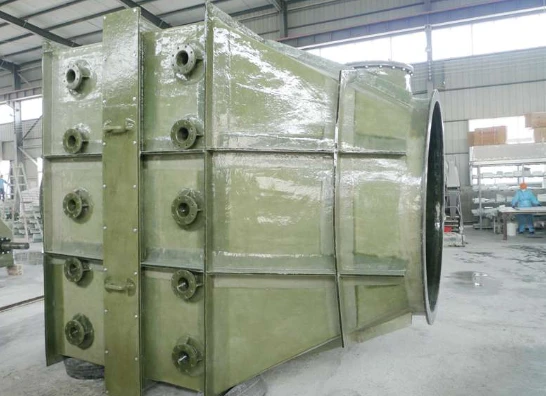
-
 Afrikaans
Afrikaans -
 Albanian
Albanian -
 Amharic
Amharic -
 Arabic
Arabic -
 Armenian
Armenian -
 Azerbaijani
Azerbaijani -
 Basque
Basque -
 Belarusian
Belarusian -
 Bengali
Bengali -
 Bosnian
Bosnian -
 Bulgarian
Bulgarian -
 Catalan
Catalan -
 Cebuano
Cebuano -
 China
China -
 China (Taiwan)
China (Taiwan) -
 Corsican
Corsican -
 Croatian
Croatian -
 Czech
Czech -
 Danish
Danish -
 Dutch
Dutch -
 English
English -
 Esperanto
Esperanto -
 Estonian
Estonian -
 Finnish
Finnish -
 French
French -
 Frisian
Frisian -
 Galician
Galician -
 Georgian
Georgian -
 German
German -
 Greek
Greek -
 Gujarati
Gujarati -
 Haitian Creole
Haitian Creole -
 hausa
hausa -
 hawaiian
hawaiian -
 Hebrew
Hebrew -
 Hindi
Hindi -
 Miao
Miao -
 Hungarian
Hungarian -
 Icelandic
Icelandic -
 igbo
igbo -
 Indonesian
Indonesian -
 irish
irish -
 Italian
Italian -
 Japanese
Japanese -
 Javanese
Javanese -
 Kannada
Kannada -
 kazakh
kazakh -
 Khmer
Khmer -
 Rwandese
Rwandese -
 Korean
Korean -
 Kurdish
Kurdish -
 Kyrgyz
Kyrgyz -
 Lao
Lao -
 Latin
Latin -
 Latvian
Latvian -
 Lithuanian
Lithuanian -
 Luxembourgish
Luxembourgish -
 Macedonian
Macedonian -
 Malgashi
Malgashi -
 Malay
Malay -
 Malayalam
Malayalam -
 Maltese
Maltese -
 Maori
Maori -
 Marathi
Marathi -
 Mongolian
Mongolian -
 Myanmar
Myanmar -
 Nepali
Nepali -
 Norwegian
Norwegian -
 Norwegian
Norwegian -
 Occitan
Occitan -
 Pashto
Pashto -
 Persian
Persian -
 Polish
Polish -
 Portuguese
Portuguese -
 Punjabi
Punjabi -
 Romanian
Romanian -
 Russian
Russian -
 Samoan
Samoan -
 Scottish Gaelic
Scottish Gaelic -
 Serbian
Serbian -
 Sesotho
Sesotho -
 Shona
Shona -
 Sindhi
Sindhi -
 Sinhala
Sinhala -
 Slovak
Slovak -
 Slovenian
Slovenian -
 Somali
Somali -
 Spanish
Spanish -
 Sundanese
Sundanese -
 Swahili
Swahili -
 Swedish
Swedish -
 Tagalog
Tagalog -
 Tajik
Tajik -
 Tamil
Tamil -
 Tatar
Tatar -
 Telugu
Telugu -
 Thai
Thai -
 Turkish
Turkish -
 Turkmen
Turkmen -
 Ukrainian
Ukrainian -
 Urdu
Urdu -
 Uighur
Uighur -
 Uzbek
Uzbek -
 Vietnamese
Vietnamese -
 Welsh
Welsh -
 Bantu
Bantu -
 Yiddish
Yiddish -
 Yoruba
Yoruba -
 Zulu
Zulu
Innovative Solutions for FRP Chemical Products and Applications in Modern Industry
Understanding FRP Chemical Products Properties and Applications
Fiber-Reinforced Polymer (FRP) chemical products represent a pivotal innovation in modern materials science, offering a unique blend of strength, durability, and versatility. Composed of a polymer matrix reinforced with fiber, typically made of glass, carbon, or aramid, FRP materials have gained prominence across various industries due to their exceptional mechanical properties and resistance to environmental degradation.
Properties of FRP Chemical Products
1. Strength-to-Weight Ratio One of the hallmark features of FRP products is their remarkable strength-to-weight ratio. This enables manufacturers to create lightweight structures that do not compromise on strength, making them ideal for applications in aerospace, automotive, and construction sectors.
2. Corrosion Resistance FRP materials exhibit outstanding resistance to corrosion, which is crucial in environments where exposure to chemicals, moisture, and other corrosive elements is a concern. This property significantly extends the lifespan of FRP products, reducing the need for frequent repairs or replacements.
3. Thermal Stability Many FRP composites maintain structural integrity under a wide range of temperatures. This thermal stability makes them suitable for applications in environments that experience significant thermal fluctuations, such as power generation facilities and industrial manufacturing plants.
4. Customizability FRP chemical products can be tailored to meet specific requirements, including variations in resin types, fiber orientation, and reinforcement methods. This versatility allows for the production of materials that are optimized for particular applications, enhancing performance and efficiency.
Applications of FRP Chemical Products
frp chemical product

The application range of FRP chemical products is extensive, spanning various industries and fields. Here are some notable examples
1. Aerospace Industry FRP composites are extensively used in the aerospace sector for the manufacture of lightweight components such as wings, fuselage sections, and interior fittings. Their high strength and low weight contribute to improved fuel efficiency and overall performance of aircraft.
2. Civil Engineering In the civil engineering domain, FRP is used in the construction of bridges, building facades, and support structures. The material’s resistance to environmental degradation ensures longevity and safety in infrastructure projects.
3. Marine Applications The marine industry benefits from FRP products due to their ability to withstand harsh aquatic environments. Boat hulls, decks, and various other components are manufactured using FRP to enhance durability and reduce maintenance costs.
4. Automotive Sector The automotive industry utilizes FRP in the production of lightweight body panels, frames, and other components to improve fuel efficiency and performance. As manufacturers strive to meet stricter environmental regulations, FRP proves to be an essential material for sustainable automotive design.
5. Renewable Energy In renewable energy applications, such as wind turbines, FRP is integral to the production of lightweight turbine blades that optimize energy capture. Its durability and resistance to fatigue make it an ideal choice for components exposed to continuous mechanical stresses.
Conclusion
In summary, FRP chemical products represent a significant advancement in material technology, characterized by their strength, versatility, and resistance to external factors. As industries face increasing demands for lightweight and durable materials, the importance of FRP will only continue to grow. With ongoing advancements in manufacturing techniques and materials science, the future of FRP products looks promising, ensuring they remain a crucial element in developing innovative solutions across multiple sectors. As we move forward, the continued research into FRP materials will unlock new potentials and applications, cementing their role in the future of engineering and manufacturing.









